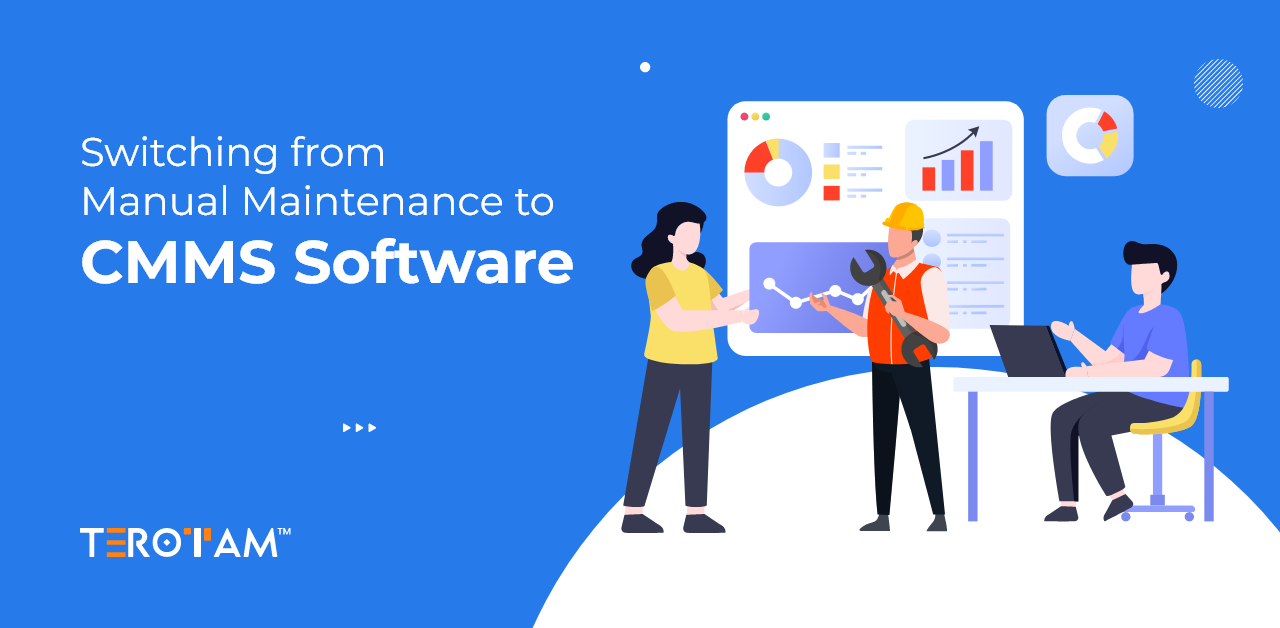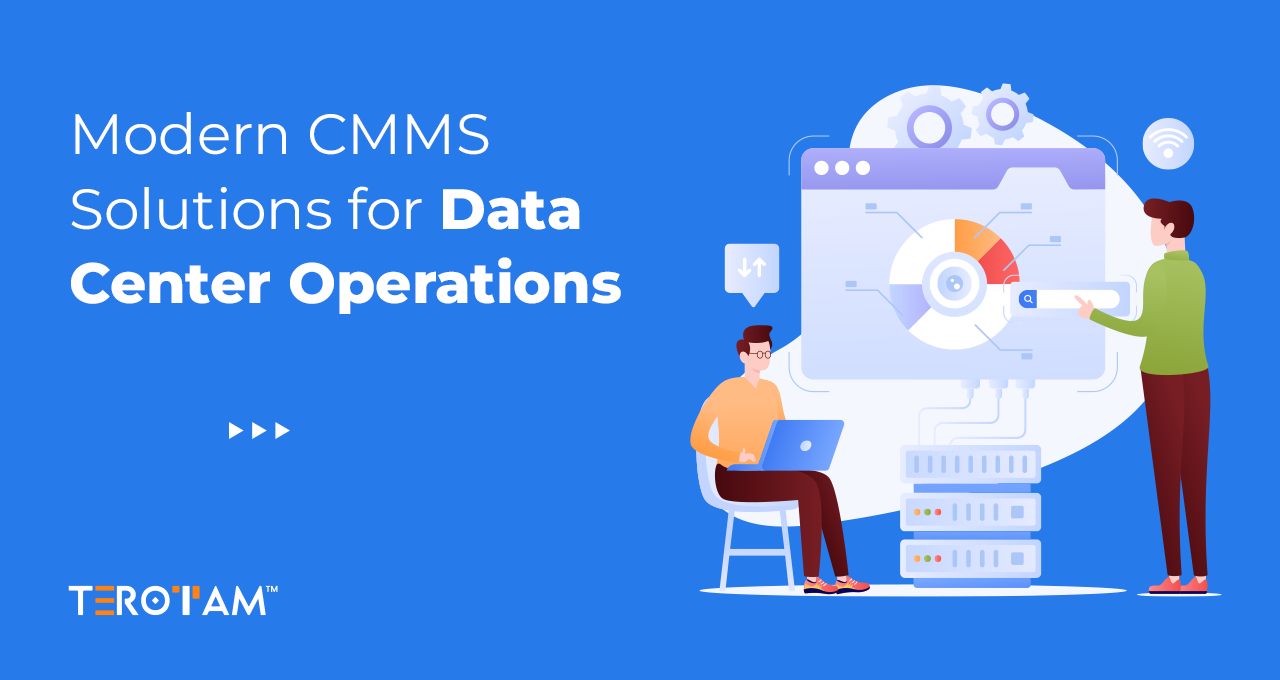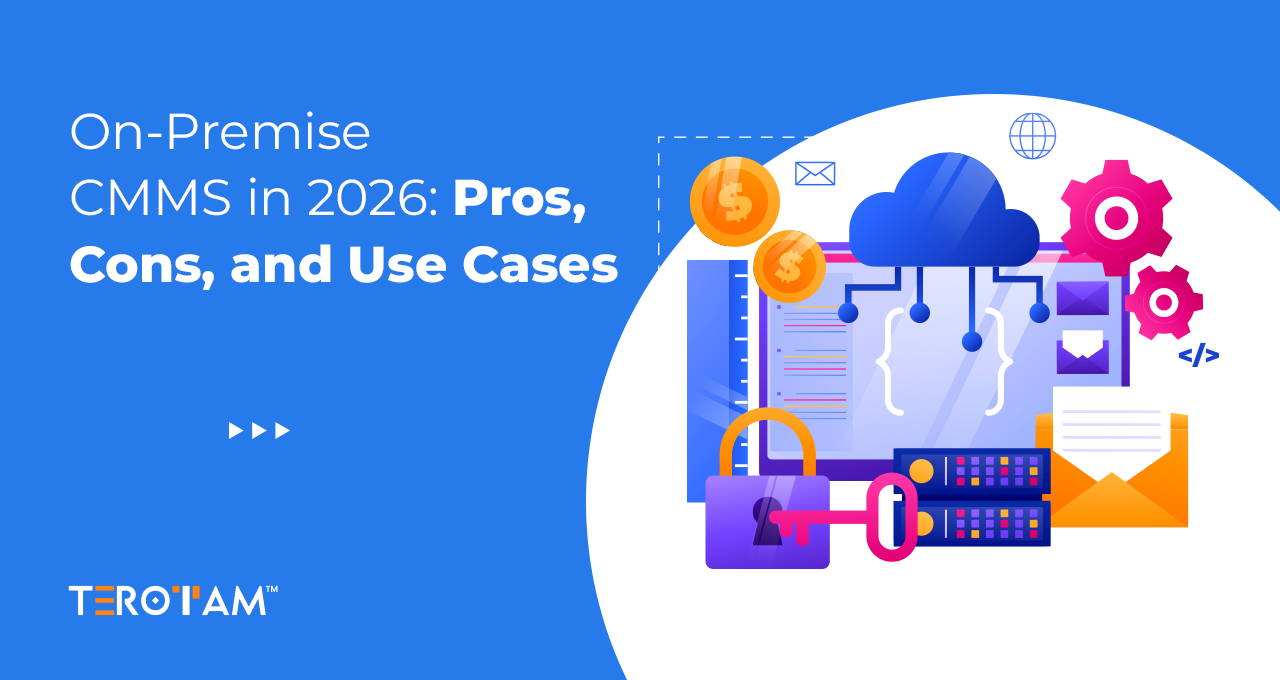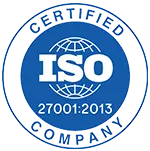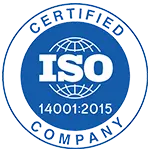Many organizations still rely on paper-based records, spreadsheets, or simple logbooks to manage maintenance activities. While these manual methods may feel manageable in the beginning, they become inefficient as asset portfolios grow, equipment gets more complex, and compliance requirements increase. The result is a maintenance system that is reactive, inconsistent, and difficult to scale.
A Computerized Maintenance Management System (CMMS) provides a structured digital framework where work orders, preventive schedules, spare parts, vendor data, and compliance records are all integrated into one platform. But switching from manual systems to CMMS requires careful planning—it’s not just about replacing a notebook with software. It involves preparing your data, rethinking workflows, training people, and setting up monitoring systems to ensure the software delivers measurable value.
This article explains why manual systems fall short, what CMMS software truly brings to maintenance operations, and how businesses can manage a smooth and effective transition.
Challenges of manual maintenance methods
Paper files and spreadsheets seem flexible, but once you cross a certain threshold of assets, they become a liability. The following are the most common limitations:
- Data fragmentation – Different technicians often maintain their own logs, which are inconsistent and not centrally accessible. In an audit or breakdown investigation, retrieving accurate records becomes difficult.
- Limited predictive capacity – Manual systems can support scheduled maintenance but fail to capture real-time asset conditions or generate predictive triggers. This leads to a higher mean time between failures (MTBF).
- Unclear maintenance costs – Spreadsheets rarely track cost breakdowns for labor, parts, and downtime. Managers cannot calculate accurate cost-per-asset or compare maintenance spend across plants or sites.
- Slow response during breakdowns – Work order allocation in manual systems relies on phone calls or physical handovers, delaying technician response.
- Poor scalability – Managing a few pumps or HVAC units manually may work, but for multi-site operations or equipment-intensive industries like manufacturing, energy, or transport, manual tracking creates unmanageable complexity.
Why is CMMS a better alternative?
A CMMS does much more than digitize a logbook. It creates a connected ecosystem of assets, people, and processes. Technically, here’s what CMMS offers:
- Dynamic work order system – Instead of static task lists, CMMS generates work orders triggered by time, usage, or sensor inputs. These are assigned automatically to technicians based on skill sets or location.
- Preventive and predictive scheduling – CMMS can map equipment usage cycles, OEM recommendations, and condition-monitoring data into maintenance schedules, moving beyond reactive repairs.
- Integrated asset hierarchy – Assets can be structured into a parent-child hierarchy (e.g., Plant → Line → Equipment → Sub-assembly), ensuring detailed visibility into performance and failures.
- Centralized parts inventory – Stock levels, reorder points, vendor SLAs, and lead times are tracked in real time. This prevents production delays caused by unavailable spares.
- Data-driven analytics – MTBF, mean time to repair (MTTR), downtime hours, and maintenance cost ratios are calculated automatically, supporting better capital planning and replacement decisions.
Step-by-step approach to switch from manual maintenance to CMMS
Switching to CMMS is not a one-time upload—it’s a structured implementation journey. Below are the stages businesses should follow for a smooth transition:
1. Audit existing maintenance ecosystem
Start by cataloguing all assets, spare parts, and maintenance practices. This is where many organizations realize that a large share of their equipment lacks standardized data such as serial numbers, purchase dates, or warranty details. Documenting this upfront ensures the CMMS database has a strong foundation.
2. Define goals and key performance indicators (KPIs)
Instead of a generic rollout, define what success looks like. For example: reducing unplanned downtime by 20%, achieving 95% compliance with preventive schedules, or reducing spare parts stock-outs by half. These KPIs will guide system configuration and help evaluate ROI later.
3. Data digitization and cleansing
Importing existing maintenance data requires care. Spreadsheets often contain duplicate asset entries, inconsistent naming (e.g., “Pump #2” vs. “Pump 2”), or missing failure codes. Before migrating:
- Standardize naming conventions.
- Remove duplicate or outdated records.
- Validate critical fields like asset ID, purchase date, and service history. This prevents data errors from undermining CMMS accuracy.
4. System configuration and workflow mapping
CMMS platforms allow customization of workflows—approval hierarchies, escalation rules, technician assignments, and multi-site access. Map your real-world practices into the software. For example, breakdown requests could auto-route to on-site technicians while preventive maintenance tasks could be scheduled based on runtime hours rather than calendar days.
5. Pilot deployment
Instead of rolling out company-wide immediately, select a pilot group of assets or a single facility. Monitor system usage, data accuracy, and technician adoption. Use this phase to refine templates, adjust notifications, and validate reporting outputs.
6. User training and adoption strategies
Technicians accustomed to manual logbooks may resist digital tools. Conduct scenario-based training—e.g., how to close a work order via mobile, how to log spare part usage, or how to generate an asset report. Reinforce adoption by showing time savings and ease of tracking.
7. Continuous monitoring and improvement
Implementation doesn’t end at go-live. Track KPIs regularly—PM compliance %, average response times, downtime reduction, and spare parts utilization. Regular reviews ensure workflows evolve with operational needs and new features of the CMMS are leveraged.
Common pitfalls when migrating from manual maintenance to CMMS
Shifting from manual systems to CMMS often faces hurdles not because of the software itself, but due to poor planning and execution. Many companies underestimate the importance of data quality, process alignment, and team readiness. These issues can slow down adoption or even make the system ineffective.
Another common challenge is overcomplicating the transition. Trying to migrate all data at once, setting rigid workflows, or ignoring technician training creates frustration. Without the right balance, CMMS becomes another underutilized tool instead of a system that drives efficiency.
Key pitfalls to watch out for:
- Inaccurate or incomplete data migration
- Overly complex workflows and approvals
- Lack of mobile accessibility for field technicians
- Poor integration with ERP or IoT systems
- Limited user training and resistance to change
- No ongoing KPI tracking or performance review
Best practices for successful CMMS implementation
- Standardize asset naming and failure codes to ensure consistency across all records.
- Keep workflows simple and user-friendly so technicians adopt the system easily.
- Integrate CMMS with ERP and IoT systems for seamless data flow and real-time insights.
- Begin with a pilot rollout to validate processes before expanding company-wide.
- Track KPIs like MTTR, MTBF, and PM compliance to measure performance improvements.
- Provide ongoing training sessions so teams stay confident and updated on system use.
- Use mobile access features to capture work orders and updates directly from the field.
- Schedule regular system audits with vendor support to keep configurations optimized.
- Scale the system gradually to new sites, assets, and modules for smoother adoption.
- Recognize and reward employees who actively use CMMS to encourage long-term engagement.
Putting it to the end
Moving from manual maintenance to CMMS software is not simply digitization—it’s a transformation of how maintenance is executed, tracked, and optimized. Businesses that plan their transition carefully, validate data quality, and drive user adoption see significant returns in reduced downtime, better cost control, and stronger compliance.
If your organization is ready to start this transition, our experts can help with planning, setup, and training. Reach out at contact@terotam.com


